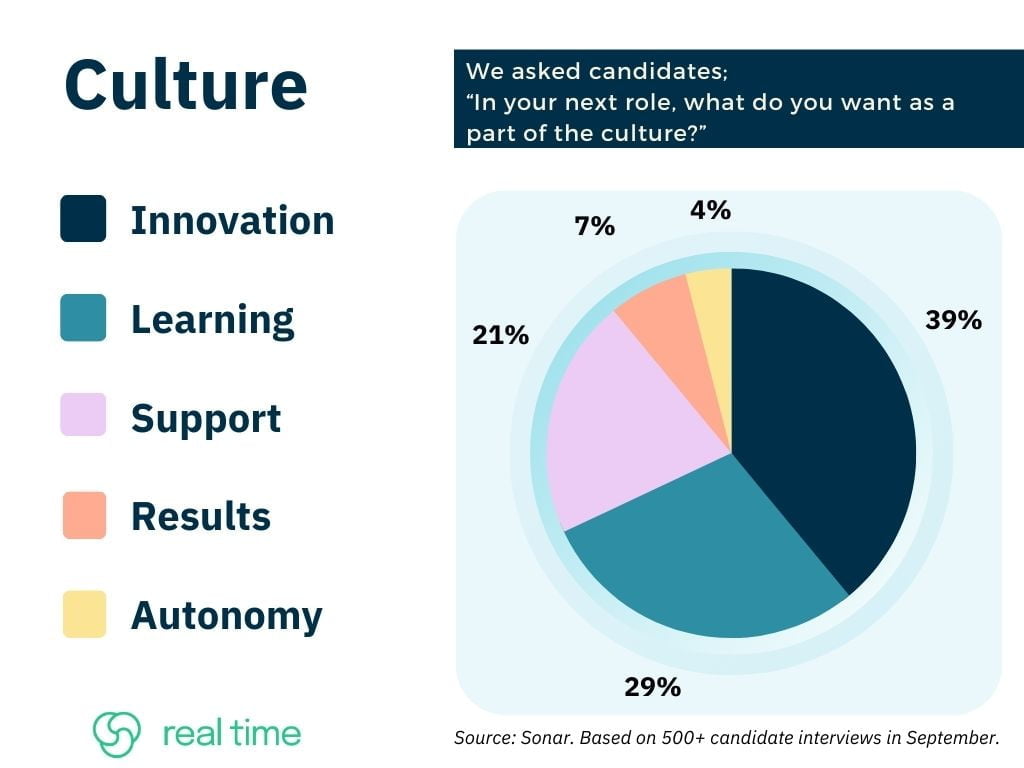We know that you and your teams are under a lot of stress at the moment. Leaders that we speak to daily are dealing with:
> Budget cuts
> Leaner, more distributed teams
> Role and structural ambiguity
> Increased pressure on delivery
> Increased demand in required AI skills
> Fewer opportunities
So, how is your current team supposed to innovate when they are under all of this stress?
And forget innovation for a second… why would anyone even hang around?
There’s a way to relieve this stress, build a stronger culture and efficiently innovate at the same time.
The answer… Cohesion !
Ideas are exchanged and championed because people feel safe.
Experiments and risks occur because ideas are challenged and debated.
People don’t leave because they are challenged and feel valued.
Who cares about promotions and labels when everyone’s voice is valued?
And therefore who cares about middle management and everything else that comes with it
When you achieve Cohesion you get Innovation!
Teams are at their best when innovation is a part of their culture.
And as the below graph shows, candidates want it.
The last 18 months have understandably seen many new features scrapped, focusing on delivery and BAU. And employees are tired of it.
They want to be stimulated and are preferencing companies who embed innovation and learning into their culture.


So, how do you get Cohesion across your teams?
When the goal is known the challenges are clear.
Make sure that everyone absolutely understands the team and organisational goals, and how their work and ideas contribute to these goals.
Then, the challenges are laid out – and no individual performer is going to overcome them. You need a champion team, not a team of champions.
Get rid of the naysayers.
If you have team members who don’t foster trust and respect, set an example by removing them.
“…But they’re our top performer” said no great leader ever.
Once everyone is on the same page, team members feel comfortable sharing their ideas and feedback. And this openness leads directly to innovation.
“The strongest drivers of people quitting was not feeling valued and lacking a sense of belonging. They lacked what I refer to as organizational solidarity: creating strong ties to one another and to a shared purpose.” Ron Carucci, HBR, 2021.
Build it and they will come.
If collaboration, idea sharing or experimentation isn’t a part of your fabric, carve out some time in the week for workshops and learning sessions.
Curiosity leads to innovation. So your leaders must show an openness to being challenged, being inclusive and rewarding curiosity.
This mindset rewards your most ambitious employees and directly correlates to higher staff participation, tenure and performance.
Tell the truth about performance (one of Netflix’s 5 HR policies).
Your team still needs to deliver results.
And do you really want to continue championing the ideas of the lowest performers on your team?
Of course not.
So talk simply and honestly about individual and team performance on a regular basis. Be transparent and data-driven.
Celebrate!
Not just successes but ideas, debate and experiments.
If your team isn’t pushing the boundaries you must assume your competitor is.
I’m personally not a fan of planned ‘team bonding’ exercises (I’d rather quit my job than be locked in another escape room), though the idea behind them is “to overcome a challenge as a team to create deeper trust and understanding.”
Why don’t you just embed that same methodology into your day-to-day culture?
Save the awkwardness and be rewarded by a real sense of accomplishment. Personally, as a team and towards your company goals.
External sensing
Outstanding innovators actually build ‘External Sensing’ into their Org structures.
External sensing is about being aware of and responding to the changes and trends that are happening outside your company walls. Then using that information to inform your decisions and strategies.
A boom for innovation!
The difference between success and failure will not be in the individual skills of your team. It will be in how you allow those skills to complement each other.


